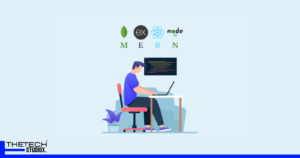Table of Contents
In the realm of drug discovery, a groundbreaking collaboration between Zapata Computing, Inc., Insilico Medicine, the University of Toronto, and St. Jude Children’s Research Hospital has illuminated the extraordinary potential of Quantum-Enhanced AI. This collaboration stands as a milestone, showcasing the first-ever instance where a generative model operating on quantum hardware has outperformed traditional classical models in the generation of viable cancer drug candidates.
The Quantum Leap in Drug Discovery
In the dynamic realm of drug discovery, where innovation can be the difference between life and death, a groundbreaking development has taken center stage – the convergence of quantum computing and artificial intelligence. This symbiotic relationship has propelled the field into uncharted territories, with a recent collaboration between Zapata Computing, Inc., Insilico Medicine, the University of Toronto, and St. Jude Children’s Research Hospital making waves in the scientific community.
The Quantum-Enhanced AI
1. Bridging the Quantum-Classical Divide
The collaboration set out to bridge the gap between classical and quantum computing, utilizing both paradigms to explore the vast landscape of potential cancer drug candidates. The team harnessed the power of a 16-qubit IBM quantum device alongside classical models, leading to a quantum-enhanced generative AI that outperformed its traditional counterparts.
2. Targeting the Notorious KRAS
The focus of this groundbreaking study was the development of novel KRAS inhibitors, a challenging endeavor in cancer therapy. The notoriety of KRAS lies in its complexity, making it a formidable target that has eluded conventional drug discovery methods. The quantum-enhanced generative model, however, showcased its prowess by generating one million drug candidates, marking a quantum leap in the quest for effective cancer treatments.
Industrial Generative AI: A Niche for Complex Challenges
3. Tailored Solutions for Industry Challenges
Distinguishing itself from general-purpose AI, Industrial Generative AI emerged as a specialized tool adept at addressing complex, domain-specific challenges within industries. The article delves into its capabilities in navigating issues such as data disarray, large solution spaces, and time sensitivity, providing a comprehensive solution for enterprises tackling intricate problems.
4. The Role of Large Language Models (LLMs)
At the core of Industrial Generative AI are Large Language Models (LLMs), which learn from training data to generate realistic outputs. This unique approach allowed the Zapata AI team to pioneer drug discovery, illustrating the potential of AI in creating transformative solutions for intricate problems.
Voices of Innovation
8. Alán Aspuru-Guzik – Pioneering Quantum Integration
Alán Aspuru-Guzik, a professor at the University of Toronto and Scientific Advisor of Zapata AI, shares optimism about integrating quantum computing into the drug discovery pipeline. This research sets a precedent, paving the way for future quantum computers to showcase their unique capabilities.
Real-World Application of Quantum Computing
9. QML Suite Python Package and Orquestra® Platform
The research employed Zapata AI’s QML Suite Python Package, available on its Orquestra® platform. This emphasizes the practical application of quantum computing in solving real-world scientific challenges, showcasing the tangible benefits of Industrial Generative AI in the drug discovery process.
10. A Stride in AI-Driven Solutions
- AI Empowering Industry-Specific Solutions: This phrase reflects the idea that AI, specifically Industrial Generative AI, is making substantial progress in developing solutions tailored to the unique demands of various industries. It implies that AI is no longer a generic tool but has taken a decisive step forward in becoming a specialized force driving advancements in specific sectors.
- Navigating Complex Challenges: The use of the term “stride” suggests a confident and purposeful movement forward. In the realm of drug discovery, which is inherently complex and challenging, AI is seen as confidently navigating through intricacies, providing answers to questions that were once considered insurmountable.
- Innovation and Efficiency: The phrase conveys the idea that AI-driven solutions are not just making incremental progress but are taking significant leaps. It signifies a departure from conventional methods, highlighting the innovative and efficient approaches made possible through the integration of advanced AI technologies.
- Meeting Industry-Specific Demands: The term “AI-Driven Solutions” emphasizes that the progress made is a result of harnessing the power of artificial intelligence. It suggests that industries are increasingly relying on AI to meet their specific demands, indicating a shift towards more intelligent and adaptive solutions.
- Strategic Partnerships and Collaborations: In the context of the article, the mention of the strategic partnership with D-Wave Quantum Inc. reinforces the notion of collaboration and cooperation in advancing AI-driven solutions. This collaborative effort implies a collective stride towards achieving common goals and overcoming challenges.
- Future Growth and Development: “A Stride in AI-Driven Solutions” suggests that the advancements made are not isolated incidents but part of a broader journey towards future growth and development. It conveys a sense of optimism about the continued evolution of AI and its role in shaping industries.
- Practical Application in Real-World Scenarios: The term implies that the progress made by AI is not confined to theoretical advancements but has practical applications in real-world scenarios. It emphasizes the tangible benefits derived from the integration of AI technologies, particularly in solving complex issues like drug discovery.
Conclusion
In conclusion, the collaboration between Zapata Computing, Inc., Insilico Medicine, the University of Toronto, and St. Jude Children’s Research Hospital has propelled drug discovery into a new era. The quantum-enhanced generative AI showcased in this groundbreaking study signifies a quantum leap in the quest for effective cancer treatments. As quantum computing continues to integrate into various industries, the potential for innovative solutions and advancements remains boundless.
This integration of Industrial Generative AI into the drug discovery process marks a significant stride in leveraging AI for innovative, industry-specific solutions, driving growth and efficiency in the ever-evolving technological landscape.
FAQs
How does Industrial Generative AI differ from general-purpose AI?
Industrial Generative AI is customized to address specific challenges within enterprises or industries, unlike general-purpose AI tools.
What was the focus of the groundbreaking study?
The study focused on developing novel KRAS inhibitors, a challenging target in cancer therapy.
How many drug candidates were generated in the research?
The research team successfully generated an impressive one million drug candidates.
What sets quantum-enhanced generative AI apart in drug discovery?
Quantum-enhanced generative AI showcased superior binding affinity compared to traditional classical models.
What is the significance of the strategic partnership with D-Wave Quantum Inc.?
The partnership aims to expand the horizons of quantum generative AI models for various commercial applications.



